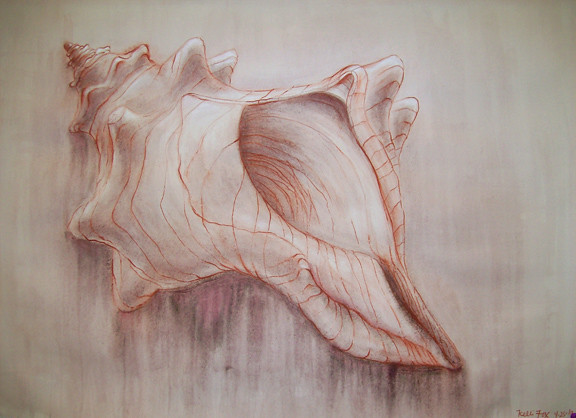This year went by really fast. It only seems like a few weeks ago that we began learning about human gesture drawings using models for reference. Following after that are the contour shell drawings and building muscles for the manikin. Although I like drawing during my leisure time, I can’t say it was easy all the way through this semester. Using different media, tools, and techniques on our projects and in-class drawings helped improve my drawing skills a little. I also think seeing other people’s work can be inspirational and it gave me a wider view of how others approach each assignment. Taking this class has improved my line weight and control, and how line placement can become important in works. I think what I can work on in the future is use more dark lines and shades. I noticed that I always end up drawing light works, but I’m gradually trying to add more values in my work.
With this being our final shell drawing, I wanted to use graphite and pencil to draw the contour outline since I used conte in my third drawing. After adding ink to the paper, I noticed that the contour lines are becoming lighter and blending with the ink. I wasn’t sure of how it will turn out, but I continued to add more shades to the shell. This time I added some darker shades in the background to help the lighter part of the shell pop, as discussed in our class shell critique. In the end I am pleased with my result. Although it may be hard to see the contour lines from afar, the light colors and lines make the shell appears soft on paper. I was surprised when we discuss in class that my shell seems to represent me, a quiet delicate shell. Looking back at my work, I guess it does.
Link to flickr images: http://www.flickr.com/photos/55486349@N08/sets/




